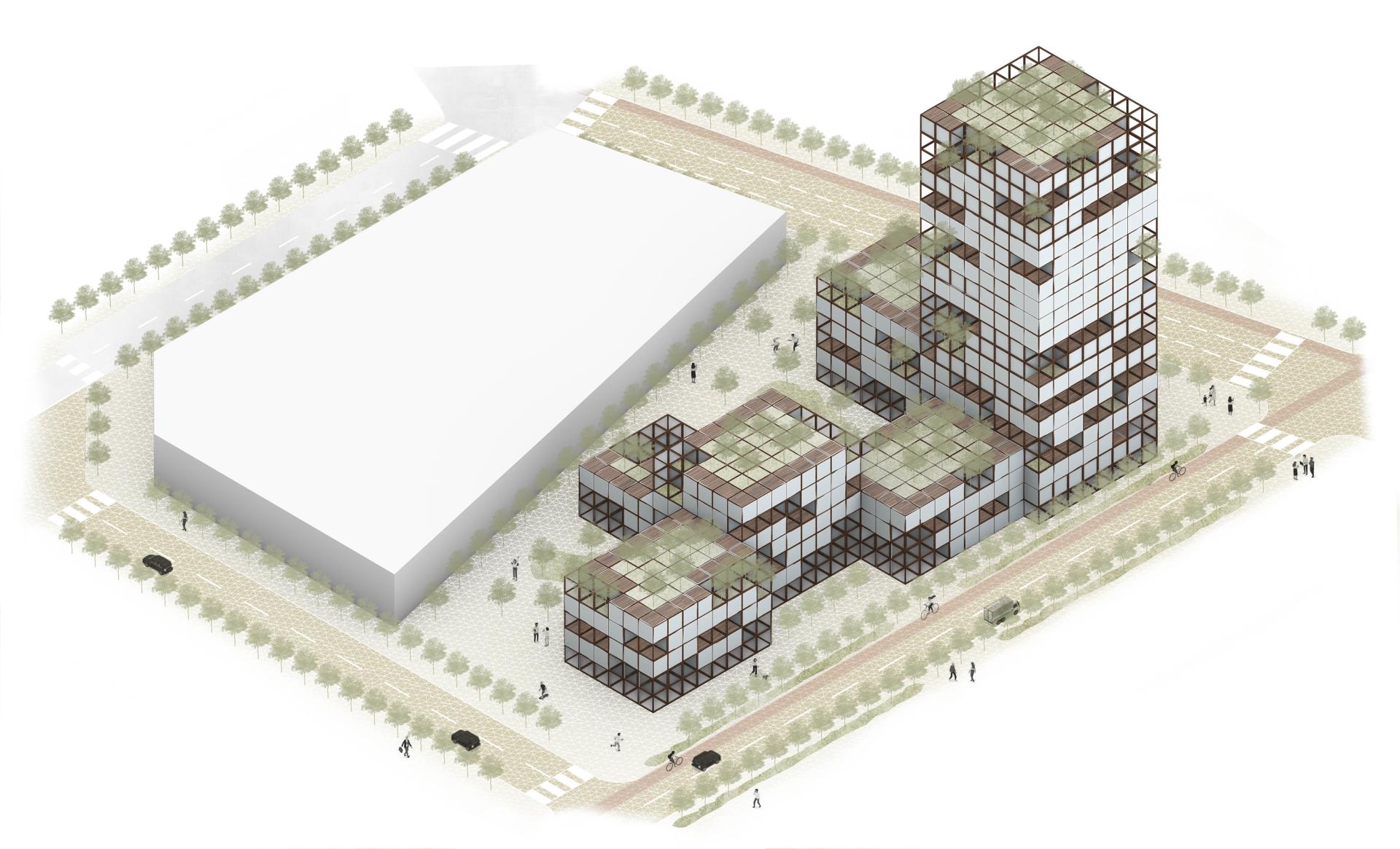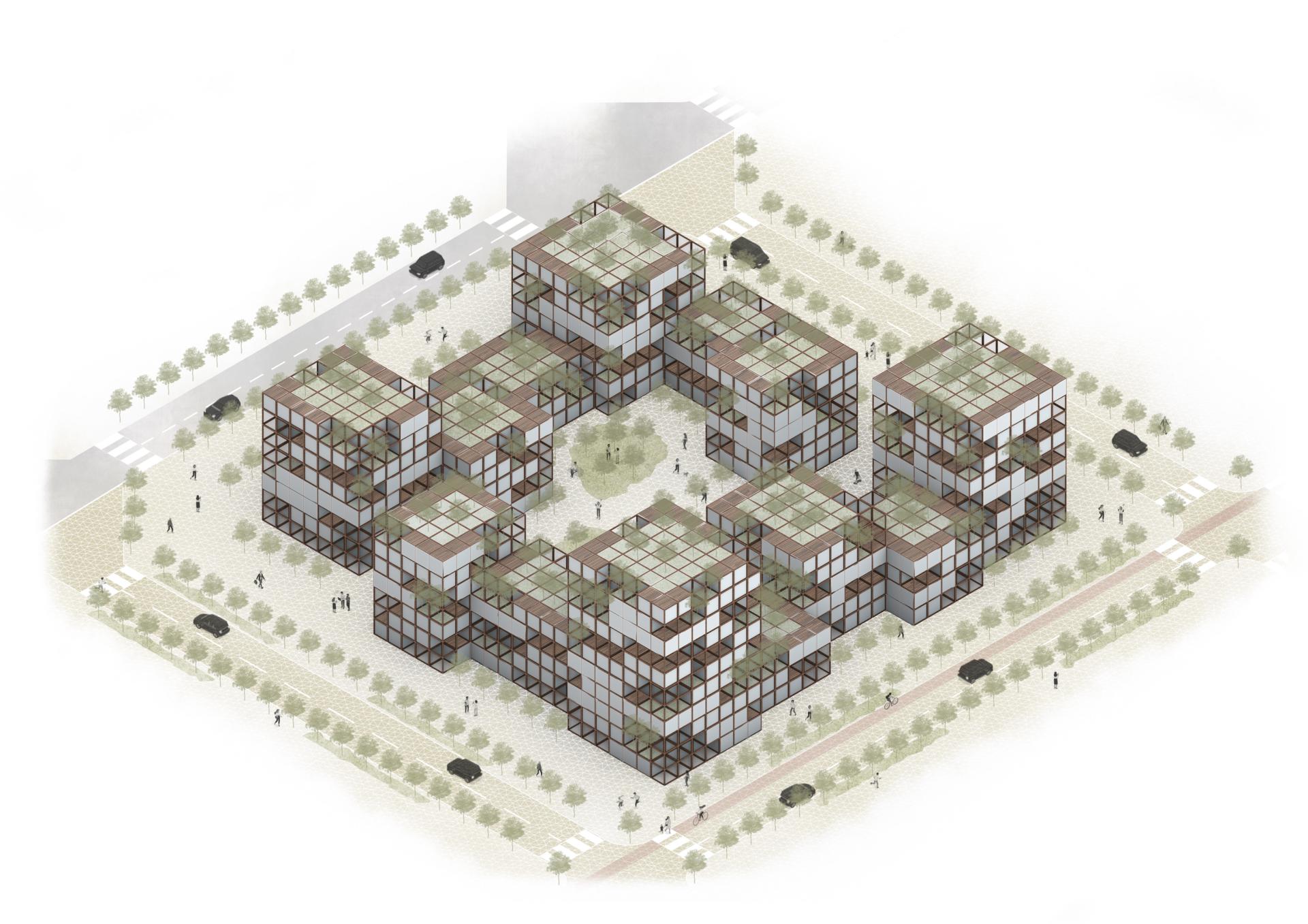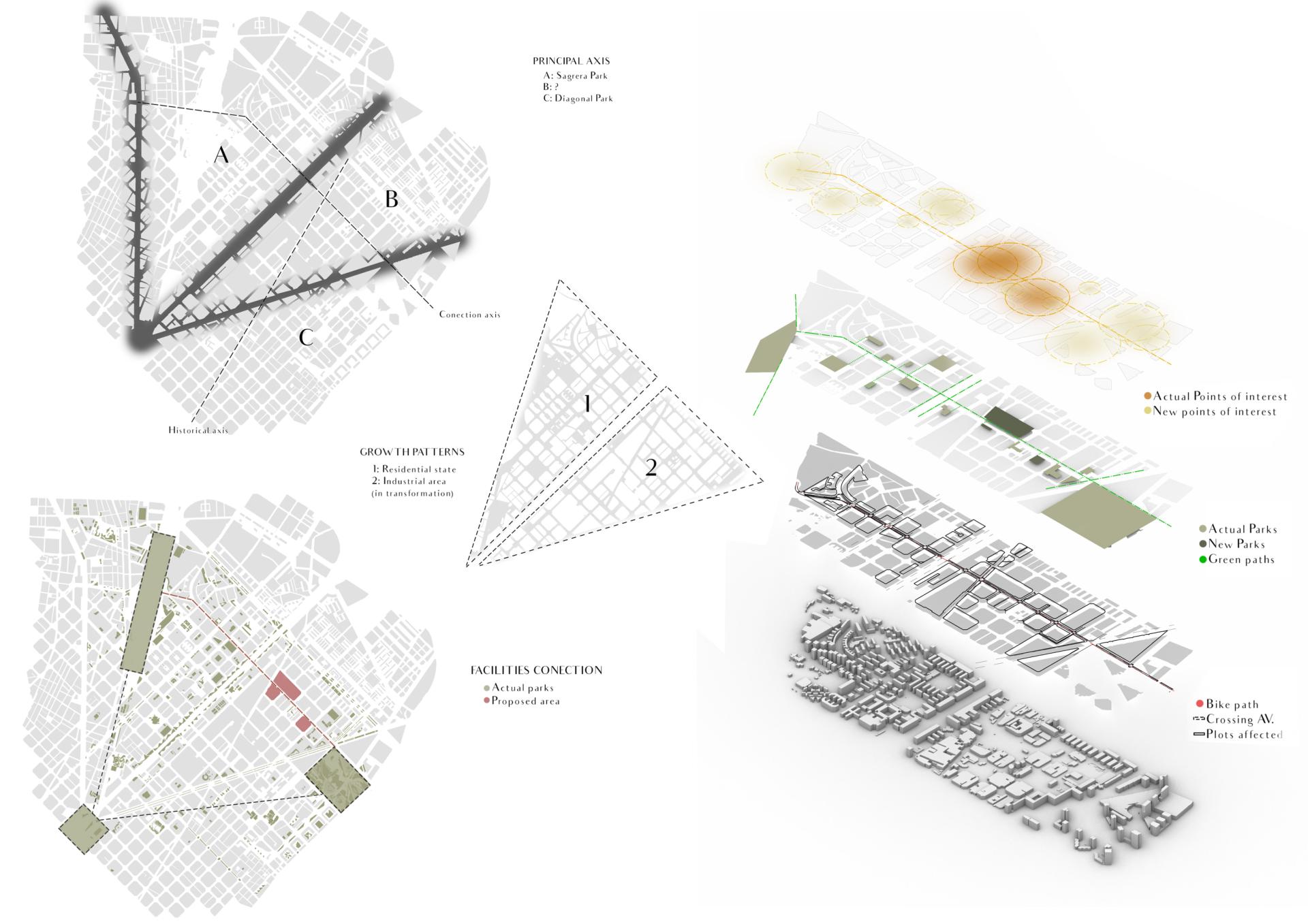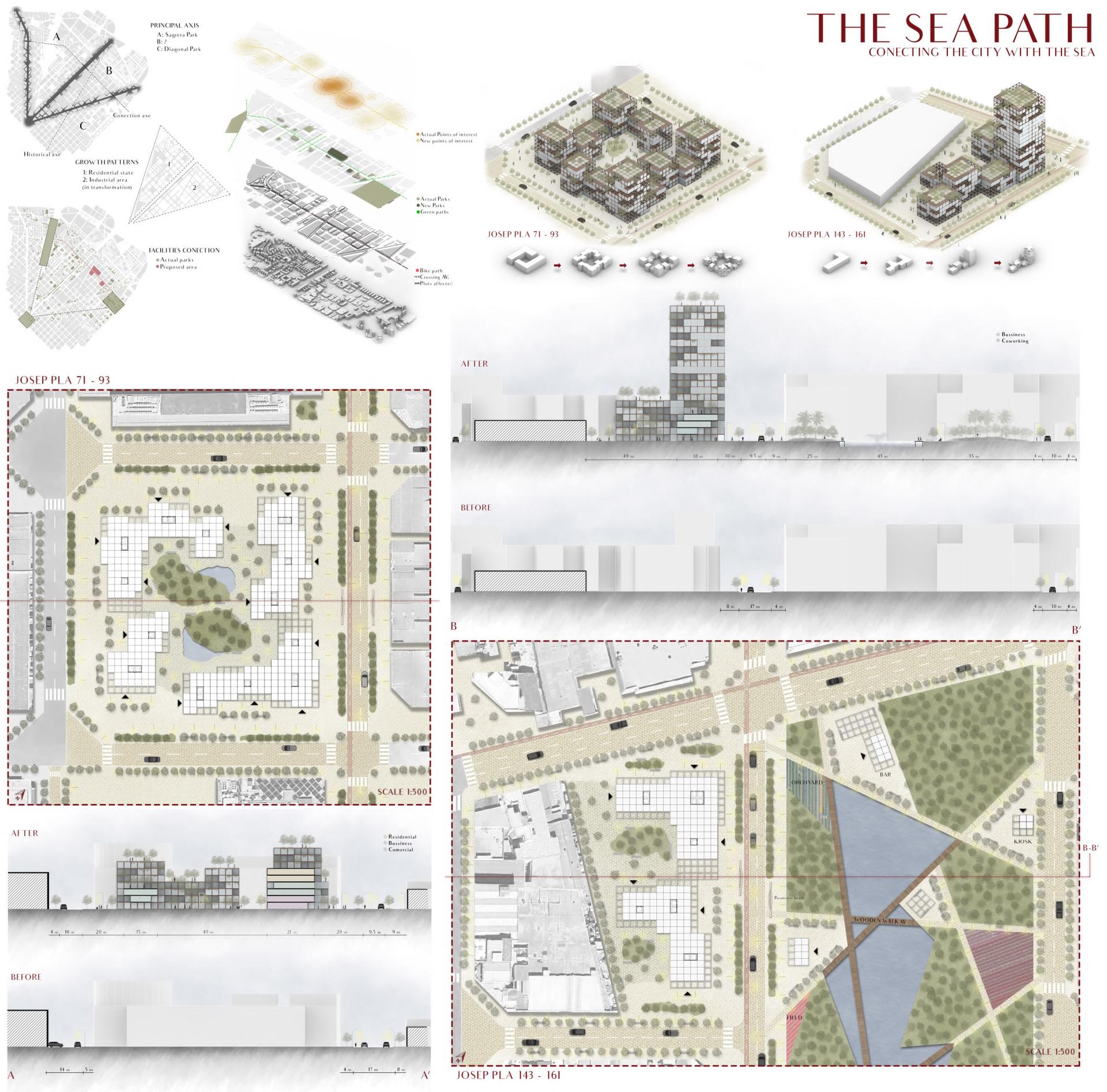The Sea path
Basic information
Project Title
Full project title
Category
Project Description
The purpose of The Sea Path project is to rethink the focus of renewal in the area, adding a new one, apart from those proposed as glories and the Sagrera, and the existing diagonal sea. This new focus located in one of the most neglected areas of the district, would not only become a commercial, cultural and leisure landmark but would serve to connect the central station of La Sagrera, with the sea, from a green corridor, the Josep Pla street.
Project Region
EU Programme or fund
Description of the project
Summary
The Sant Martí district has been characterized in recent years as being the focus of most of the city's urban renewal. This district is relatively new since prior to the 70s, there were practically no homes and most of it was an industrial area. From these events, urban renovations such as the Forum, Glòries or the most influential long-term project of Sant Martí, 22 @, began to be considered. The purpose of this project is to attract the financial and business sector, thus renovating the industrial area and in turn maintaining the architectural heritage. 22 @ has been projected throughout the district in recent years, with the Plaza de las Glorias being its focus. However, for the near future, there are also other projects planned such as the new park of glories and the great park of la Sagrera, which includes the new AVE station. The purpose of The Sea Path project is to rethink the focus of renewal in the area, adding a new one, apart from those proposed as glories and the Sagrera, and the existing diagonal sea. This new focus located in one of the most neglected areas of the district, would not only become a commercial, cultural and leisure landmark but would serve to connect the central station of La Sagrera, with the sea, from a green corridor, the Josep Pla street. In this way, it revalues the area and encourages investment in it. One of the disadvantages of 22 @ is that the land used for this purpose has a purely business use, so that the life of the place is lost when it is not working time. For this reason, the projects attached to the green corridor give tension to the area by creating multipurpose spaces, so that it not only serves as a business area but also so that it becomes a residential, commercial and leisure space, in order to create a metropolitan-scale activity centre.
Key objectives for sustainability
Currently Josep Pla street is quite crowded in some areas and little in others, so it is proposed to pave this street completely while keeping a minimum number of car lanes so as not to affect traffic in the area as much. In this way, cars are forced to find an alternative route to this and the use of bicycles and buses is promoted. In the area where this project is focused, the minimum number of lanes left for road traffic is two one-way lanes, accompanied by a bicycle path. Street paving also affects public spaces adjacent to the street and the land designated for this project. In this way a mesh is created that attracts pedestrians to follow the route, finding different experiences along the way. Public space is essential for this project, that is why the green corridor is endowed with lush and local vegetation. In addition, in the land that has been destined for building, the desire to have a large public space remains, with green areas around the buildings and even with a large park at the intersection of Calle Josep Pla with the historical axis of Pere IV. In this way, the green remains from the beginning in the Sagrera until it reaches the sea. To facilitate the construction and location of the buildings, a 3x3x3 meter wooden modular base has been used, with which one plays until reaching the final result, several buildings of different heights and shapes, but always having a base structure. On the terraces of each building, there is a green roof so that in this way the space occupied by the buildings can be recovered on the roofs of each one. All buildings contain vertical porches and gardens to create a game between public and private space.
Key objectives for aesthetics and quality
Currently Josep Pla street is quite crowded in some areas and little in others, so it is proposed to pave this street completely while keeping a minimum number of car lanes so as not to affect traffic in the area as much. In this way, cars are forced to find an alternative route to this and the use of bicycles and buses is promoted. In the area where this project is focused, the minimum number of lanes left for road traffic is two one-way lanes, accompanied by a bicycle path. Street paving also affects public spaces adjacent to the street and the land designated for this project. In this way a mesh is created that attracts pedestrians to follow the route, finding different experiences along the way. Public space is essential for this project, that is why the green corridor is endowed with lush and local vegetation. In addition, in the land that has been destined for building, the desire to have a large public space remains, with green areas around the buildings and even with a large park at the intersection of Calle Josep Pla with the historical axis of Pere IV. In this way, the green remains from the beginning in the Sagrera until it reaches the sea. To facilitate the construction and location of the buildings, a 3x3x3 meter wooden modular base has been used, with which one plays until reaching the final result, several buildings of different heights and shapes, but always having a base structure. On the terraces of each building, there is a green roof so that in this way the space occupied by the buildings can be recovered on the roofs of each one. All buildings contain vertical porches and gardens to create a game between public and private space.
Key objectives for inclusion
As it was explained before, one of the disadvantages of 22 @ is that the land used for this purpose has a purely business use, so that the life of the place is lost when it is not working time. For this reason, the projects attached to the green corridor give tension to the area by creating multipurpose spaces, so that it not only serves as a business area but also so that it becomes a residential, commercial and leisure space, in order to create a metropolitan-scale activity centre. In this way, this project makes a big impact on the area, as creates a new community in a neighbourhood that has been abandoned for many years. This community has the opportunity to implement the proximity ratio of services. Apart from that, street paving also affects public spaces adjacent to the street and the land designated for this project. In this way a mesh is created that attracts pedestrians to follow the route, finding different experiences along the way. The design of this project has taken into account the need of making a community that includes all of us, from people with mobility difficulties to people with mental health issues. All the materials, shapes, spaces and colours have been selected in order to accomplish this.
Innovative character
This new focus located in one of the most neglected areas of the district, would not only become a commercial, cultural and leisure landmark but would serve to connect the central station of La Sagrera, with the sea, from a green corridor, the Josep Pla street. In this way, it revalues the area and encourages investment in it. This project would create a new hub in Barcelona that not only embraces the business sector but also would benefit the community, and the sustainability requirements of the European Union.




